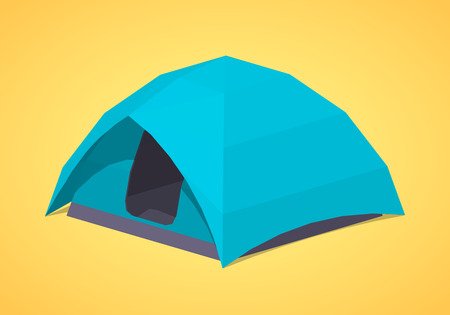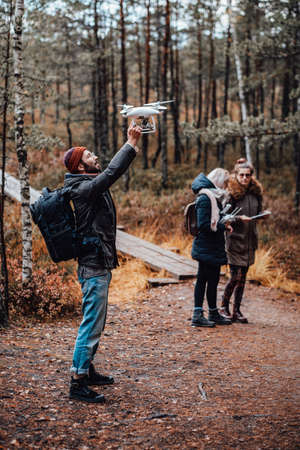Understanding Survivalist Camping
Survivalist camping is more than just spending a night in the woods — it’s about self-reliance, preparedness, and connecting deeply with nature. Unlike traditional camping, which often involves packed coolers, cozy RVs, and well-marked campgrounds, survivalist camping strips things down to the basics. It challenges you to live off the land using minimal gear and maximum know-how.
What Is Survivalist Camping?
At its core, survivalist camping combines outdoor adventure with survival skills. Campers rely on their ability to source water, build shelter, start a fire without matches or lighters, and sometimes even forage for food. It’s not about roughing it for fun—it’s about practicing real-life survival techniques that could come in handy during emergencies or extreme situations.
Philosophy Behind Survivalist Camping
The philosophy of survivalist camping is rooted in self-sufficiency and resilience. Many Americans are drawn to this style of camping because it teaches valuable life skills, promotes independence, and fosters a deeper appreciation for nature. It also aligns with the growing interest in emergency preparedness and sustainable living.
Survivalist vs. Traditional Camping
The table below breaks down the key differences between survivalist and traditional camping:
| Feature | Traditional Camping | Survivalist Camping |
|---|---|---|
| Gear | Tents, coolers, gas stoves, sleeping bags | Minimal gear (knife, tarp, firestarter) |
| Shelter | Pre-made tents or RVs | Hand-built shelters from natural materials |
| Food & Water | Brought from home or store-bought supplies | Sourced from environment (foraging, purification) |
| Location | Designated campgrounds with amenities | Remote wilderness areas with no services |
| Purpose | Recreation and relaxation | Skill-building and self-reliance training |
Why Its Gaining Popularity in the U.S.
Across the U.S., more people are turning to survivalist camping as a way to unplug from modern life and prepare for the unexpected. The rise in natural disasters, economic uncertainties, and even TV shows like Naked and Afraid or Alone have inspired Americans to sharpen their survival instincts. For outdoor enthusiasts who crave both adventure and purpose, survivalist camping offers a rewarding challenge that goes beyond a weekend getaway.
The Appeal of Going Back to Basics
This back-to-basics approach resonates especially with those who value simplicity and resourcefulness. Whether its learning how to make a fire without matches or identifying edible plants in the wild, each skill learned brings confidence—and maybe even a little peace of mind—in an unpredictable world.
Who Is It For?
You don’t need to be a hardcore prepper to enjoy survivalist camping. From weekend warriors wanting to test their limits to families teaching kids basic life skills, there’s room for everyone in this growing community of modern-day adventurers.
If youre curious about ditching the comfort zone and embracing the wilderness with nothing but your wits and essentials—survivalist camping might just be your next big adventure.
2. Essential Gear and Tools
When it comes to survivalist camping in the American wilderness, having the right gear can make all the difference. Whether youre trekking through the Rockies or setting up camp deep in a national forest, being prepared with essential tools is key to staying safe and self-reliant. Heres a breakdown of must-have equipment every survivalist camper should consider:
Tactical Backpack
Your backpack is your mobile basecamp. Choose one thats rugged, water-resistant, and has multiple compartments for organization. Look for MOLLE webbing (Modular Lightweight Load-carrying Equipment) so you can attach extra pouches or gear.
Recommended Features:
- Capacity: 40L – 65L
- Durable materials like 1000D nylon
- Hydration bladder compatibility
- Padded shoulder straps and waist belt for comfort
Survival Knife
A high-quality survival knife is one of the most versatile tools you can carry. From cutting rope to preparing food, its a true multi-tasker.
Top Qualities to Look For:
- Full tang blade (for strength)
- Blade length between 4″ and 6″
- High-carbon steel or stainless steel
- Non-slip grip handle
Fire Starters
You cant count on matches or lighters alone in the wild. Pack at least two methods to start a fire, even in wet conditions.
| Fire Starter Type | Description | Best Use Case |
|---|---|---|
| Ferrocerium Rod (Ferro Rod) | Sparks at high temperatures when scraped with steel | Reliable in any weather, great backup tool |
| Waterproof Matches | Treated to ignite even when wet | Quick fires in damp conditions |
| Lighter (Butane or Zippo) | Easy ignition, refillable options available | Everyday convenience for quick use |
Shelter Options
Your shelter protects you from wind, rain, and cold temperatures. Whether its a lightweight tent or a makeshift tarp setup, pick what fits your environment best.
- Bivy sacks: Compact and ideal for solo campers.
- Tarp shelters: Versatile and ultralight; learn different configurations like A-frame or lean-to.
- Tents: Choose four-season tents if youre heading into colder climates like the Sierra Nevadas or Northern Rockies.
Emergency Communication Devices
If youre off-grid and something goes wrong, youll need a way to call for help. Cell phones wont always work in remote areas — but these devices will.
| Device Type | Description | Recommended Use |
|---|---|---|
| SAT Phone (Satellite Phone) | Makes calls via satellite signal instead of cell towers | Critical for extended trips far from civilization |
| Personal Locator Beacon (PLB) | Sends GPS coordinates to rescue services during emergencies | Lifesaver during life-threatening situations in remote locations |
| Two-Way Radio (FRS/GMRS) | Keeps communication open with your group within short distances | Useful in team-based scenarios where cell service is spotty |
Other Must-Have Tools & Accessories
- Multi-tool: Includes pliers, screwdrivers, scissors — perfect for quick fixes.
- Paracord: Strong and lightweight cordage used for shelter building, repairs, traps, and more.
- Duct Tape: Surprisingly useful for patching gear, sealing wounds temporarily, or even starting fires in a pinch.
- Headlamp: Preferably rechargeable with red light mode to preserve night vision.
- First Aid Kit: Customize it with items specific to your needs — antihistamines, tourniquets, antiseptic wipes, etc.
No matter where your adventure takes you — from the Appalachian Trail to the deserts of Arizona — this essential gear will help you tackle challenges head-on while keeping you safe and prepared in Americas great outdoors.

3. Mastering Outdoor Survival Skills
When youre out in the wild, far from the comforts of home, knowing how to take care of yourself is key. Survivalist camping isnt just about roughing it—its about being prepared, confident, and self-reliant. In this section, we’ll walk you through the core survival skills every camper should know to thrive in the backcountry of North America.
Building a Shelter
A good shelter protects you from wind, rain, cold, and heat. Whether youre using natural materials or a tarp from your pack, the goal is to stay dry and warm.
Types of Basic Shelters:
| Shelter Type | Best For | Materials Needed |
|---|---|---|
| Lean-to | Wind protection | Branches, tarp or poncho |
| A-Frame | Rain and snow | Rope/paracord, tarp or branches |
| Debris Hut | Cold climates | Leaves, sticks, moss |
Starting a Fire
Fire is essential for warmth, cooking, purifying water, and signaling for help. Practice these methods before heading out:
Common Fire Starting Methods:
- Ferro Rod: Durable and works even when wet.
- Lighter: Easy to use—bring backups.
- Flint and Steel: Traditional method; takes practice.
- Bow Drill: Primitive but reliable with skill.
Tip:
Always carry some tinder like cotton balls soaked in petroleum jelly—they light up fast and burn long enough to catch larger kindling.
Purifying Water
You cant survive more than a few days without clean water. Even clear mountain streams can carry bacteria and parasites like Giardia.
Water Purification Methods:
| Method | Pros | Cons |
|---|---|---|
| Boiling | Kills all pathogens | Takes time & fuel; needs a container |
| Iodine Tablets | Lightweight & compact | Taste can be unpleasant; not effective against all protozoa |
| Water Filter (e.g., Sawyer or LifeStraw) | Fast & easy to use | Filter can clog or break if not maintained |
| Solar Disinfection (SODIS) | No equipment needed beyond bottles & sunlight | Takes 6+ hours in full sun; limited volume per bottle |
Foraging for Food
If youre stuck in the wild longer than expected, knowing what’s safe to eat can make all the difference. North America has plenty of edible plants—but also dangerous lookalikes.
Basic Foraging Tips:
- Avoid anything with white berries or mushrooms unless youre an expert.
- Dandelions are edible from root to flower—and they’re everywhere.
- Cattails (found near water) have edible shoots and roots.
- Berries like blackberries and blueberries are generally safe—but always double-check before eating anything wild.
Caution:
If you’re unsure about a plant or mushroom—don’t eat it. The risk isn’t worth it. Consider carrying a pocket-sized regional foraging guide specific to your camping location.
The more you practice these survival skills before you head out, the more confident youll feel when youre deep in the wilderness. Start small, get familiar with your gear and surroundings, and build up your skills over time.
4. Safety and Emergency Preparedness
Survivalist camping can take you into some of the most remote and unpredictable parts of the U.S., so being prepared for emergencies is non-negotiable. Whether youre trekking through the Rockies, camping in the deserts of Arizona, or navigating dense Appalachian forests, safety should always come first. Heres what you need to know to stay safe and be ready for whatever nature throws your way.
First-Aid Skills Every Camper Should Know
You don’t need to be a paramedic, but having a solid understanding of basic first-aid can make a huge difference in an emergency. Here are some must-know skills:
- How to clean and dress wounds
- Recognizing and treating dehydration and heatstroke
- CPR and how to use an AED (if available)
- Handling sprains, fractures, and dislocations
- Treating insect bites and allergic reactions
Consider taking a certified wilderness first-aid course before heading out. Many outdoor retailers like REI offer them regularly across the country.
Understanding Local Wildlife
The U.S. has incredibly diverse wildlife depending on where youre camping. Being aware of potential animal encounters can prevent dangerous situations. Heres a quick guide:
| Region | Common Wildlife | Safety Tips |
|---|---|---|
| Pacific Northwest | Bears, cougars | Store food in bear-proof containers, avoid hiking at dawn/dusk |
| Southeast U.S. | Alligators, snakes | Avoid swimming in unknown waters, wear boots in tall grass |
| Southwest U.S. | Scorpions, rattlesnakes | Shake out gear before use, never reach blindly under rocks or logs |
| Northern states & Rockies | Bears, moose | Carry bear spray, keep distance from large animals |
| Northeast forests | Ticks, black bears | Use tick repellents, hang food away from camp area |
Dealing with Extreme Weather Conditions
The weather in the wild can change fast — sometimes within minutes. Knowing how to handle different types of extreme weather will keep you safer and more comfortable during your trip.
Thunderstorms & Lightning
- Avoid open fields and high points like ridges or lone trees
- If caught outside, crouch low on the balls of your feet with minimal contact to the ground
- Stay away from metal objects including tent poles and trekking poles during storms
Extreme Heat
- Camp in shaded areas when possible; hike early morning or late evening hours
- Drink water frequently — don’t wait until youre thirsty
- Add electrolytes to water if sweating heavily over long periods of time
Snow & Freezing Temperatures
- Dress in layers — moisture-wicking base layer, insulating middle layer, waterproof outer layer
- Avoid cotton as it holds moisture and increases risk of hypothermia
- Melt snow for water only after boiling it to remove contaminants like bacteria or debris particles
Create an Emergency Plan Before You Go
No matter where youre headed, let someone know your itinerary: where you’re going, when you plan to return, and who youre with. Also consider carrying a GPS beacon or satellite messenger — devices like Garmin inReach or SPOT Gen4 allow you to call for help even with no cell signal.
Packing Essentials for Emergency Preparedness:
| Item | Purpose |
|---|---|
| First-Aid Kit (customized) | Treat injuries immediately on-site before they get worse |
| Multi-tool/knife | Cuts bandages, helps with food prep or shelter building if needed quickly |
| Fire starter & waterproof matches/lighter | Create warmth or signal for help if needed |
| Emergency blanket or bivvy sack | Keeps body heat contained during cold nights or shock recovery |
| Solar charger or backup batteries | Keeps GPS devices or phones usable longer during extended stays |
| Whistle & signal mirror | Simplifies search-and-rescue visibility efforts |
| Water purification tablets/filter | Makes any found water safe enough to drink |
| Laminated map & compass | If electronics fail, still navigate back safely |
Your best survival tool is preparation. The more knowledge and gear you bring with you — especially tailored to the terrain and climate — the better your chances of having not just a safe experience but an enjoyable one too.
5. Top Survivalist Camping Destinations in the USA
If youre ready to take your survivalist camping skills to the next level, the United States offers a wide range of remote and rugged destinations where nature is raw and the challenges are real. From dense forests to arid deserts, these locations allow you to test your knowledge in navigation, shelter-building, fire-starting, and foraging. Heres a look at some of the top spots across the country, complete with tips on terrain, permits, and local wildlife.
Best Survivalist Locations by Region
| Location | State | Terrain Type | Permit Required | Wildlife to Watch For |
|---|---|---|---|---|
| Frank Church–River of No Return Wilderness | Idaho | Mountains & Forests | Yes (Backcountry Permit) | Bears, Mountain Lions, Wolves |
| Big Bend National Park | Texas | Desert & Canyons | Yes (Backcountry Permit) | Rattlesnakes, Coyotes, Scorpions |
| Adirondack Park | New York | Forests & Lakes | No (Some Restrictions Apply) | Bears, Moose, Ticks |
| Ocala National Forest | Florida | Pine Scrub & Wetlands | No (Free Dispersed Camping Allowed) | Alligators, Snakes, Wild Boars |
| Denali National Park (Remote Areas) | Alaska | Tundra & Mountains | Yes (Strict Regulations) | Bears, Wolves, Extreme Weather |
Key Tips for Each Location
Frank Church–River of No Return Wilderness (Idaho)
This massive wilderness area offers solitude and steep terrain. Be prepared for river crossings and cold nights. A bear canister is a must here.
Big Bend National Park (Texas)
The desert climate means temperature swings between day and night. Bring plenty of water and be cautious of venomous creatures.
Adirondack Park (New York)
This is a great spot for testing your winter survival skills if you visit during colder months. The park is huge with many unmarked trails—map and compass are essential.
Ocala National Forest (Florida)
The subtropical climate makes hydration critical. Watch out for wetlands that can flood unexpectedly during rainy season.
Denali National Park (Alaska)
This destination is only for experienced survivalists due to its extreme conditions. Weather can change quickly; pack accordingly and always inform park rangers of your route.
Packing Essentials for These Destinations
- Water purification system or tablets
- Bivy sack or lightweight shelter
- Topographic maps and compass or GPS device with offline maps
- Bear spray (especially in Alaska and Idaho)
- Multi-tool with fire starter capabilities
No matter which destination you choose, make sure to check current local regulations on backcountry camping before heading out. Each area has unique rules about campfires, wildlife safety, and waste disposal that are crucial for both your safety and environmental preservation.


